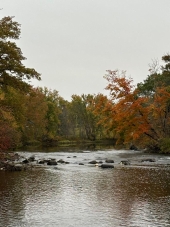In terms of insulation, I have grouped the wet places (bathroom, toilet, kitchen) efficiently. We'll use untreated sheeps wool in the floor that limited area, and cheap local blown in cellulose fiber elsewhere.
One architect we talked to about our house warned us in very stark terms about sheep wool. He said he was involved in one property where the owner insisted on using it and it turned out real bad. They had to break open the walls and pull it out, because it started to smell. Probably due to inexperience on part of the planners, but I would be careful.
Why don't you use straw bales? You can use them for both floor and walls (as long as there is no constant source of dampness). A standard bale has good enough R-value to build a passive house, it is quite conductive to amateur builders and is quite cheap (surely cheaper than sheep wool). You an use them in standard wood framed construction (just make the walls a bit wider) and it plays really nicely with a an earthen finish.






